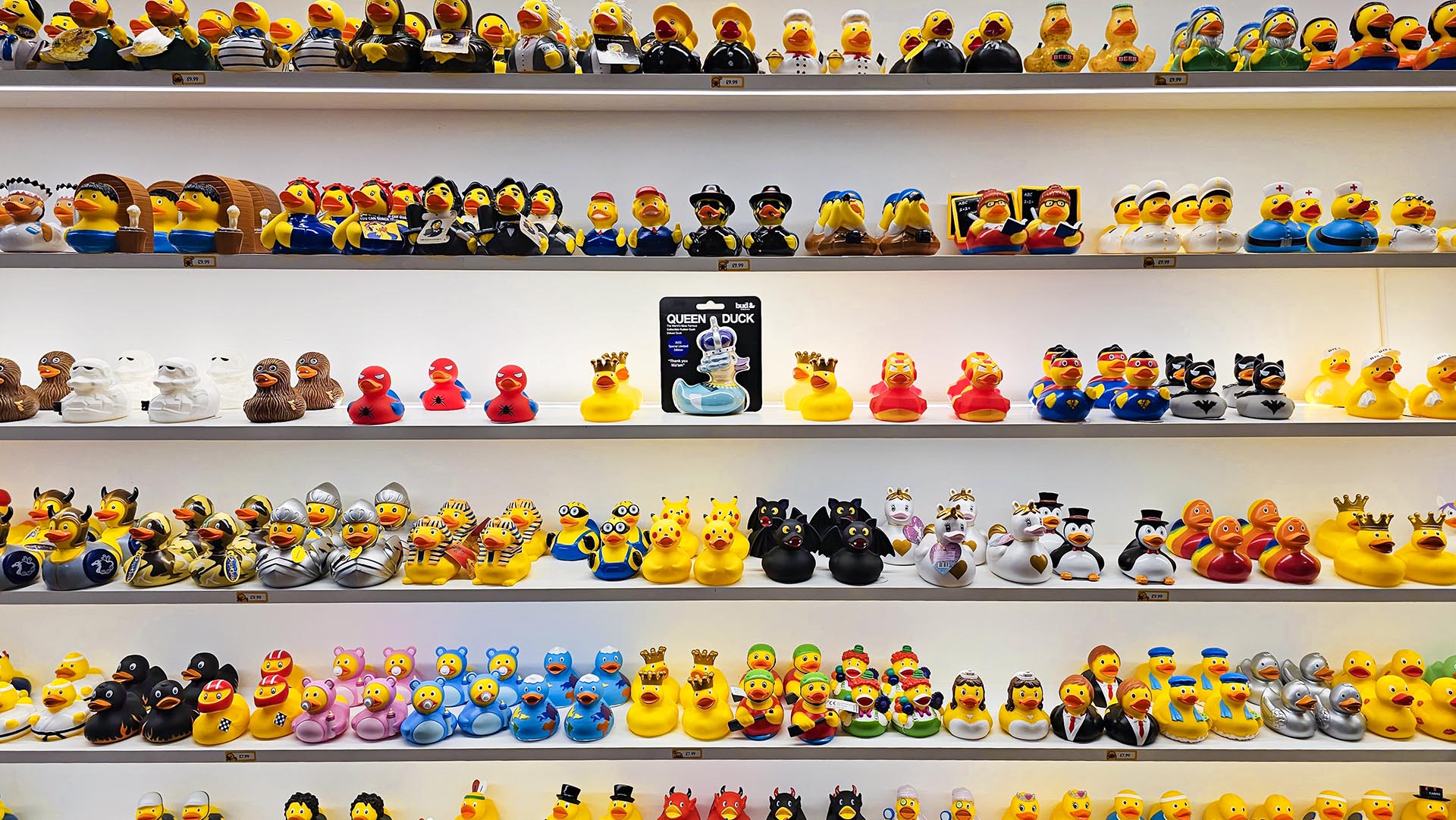If your initial thought about the iconic bathing toy is a plain and yellow one, then get ready to expand your mind because recently opened Duck World on 60 Charing Cross Road has such a wide variety you won’t believe it.
Quack quack!
Here you will find over 250 of the most interesting themed rubber ducks from British and European designers. Here is Shakespeare Duck, Charles Duckins, Constable Duck, Darth Vader, Donald Trump, Boris Jonson and more! Not only are they incredibly funny, but they’re very well made, too.
Filled with stylish and on-trend designs, these ducks are bursting with colour and ready to brighten up your bathroom, because what fun is taking a bath if you don’t have toys to play with!
Duck mania
Duck World was started by Filip Perkon and Irina Fedotova to bring smiles and happiness to people and by stocking the biggest variety of Rubber ducks in London. “The origins of rubber ducks can be traced back to the mid-1800s, when rubber manufacturing was becoming more widespread.
In the late 1800s, rubber ducks became a popular toy, particularly in America, and by the early 1900s, they had become a staple of children’s playtime. The popularity of rubber ducks continued to grow throughout the 20th century, and they remain a popular children’s toy today”, said Filip Perkon.
Primarily associated with children’s bath time, rubber ducks have emerged from the tub into a variety of new settings for adults. In addition to their use as children’s toys, rubber ducks have become a cultural icon and are used in a variety of contexts, including artwork, protest actions, parody etc.
One of the most well-known uses of rubber ducks is in the practice of “rubber duck debugging,” which is a programming technique in which a programmer explains their code line-by-line to a rubber duck in order to identify errors and bugs in the code. The technique is thought to have originated from a story about a programmer who carried around a rubber duck and used it to help them debug their code.
Fundraising with duck races
Rubber ducks are also used in a variety of charitable and philanthropic efforts. For example, the annual Great British Duck Race raises money for various charities by selling rubber ducks that are raced down the River Thames in London.
Rubber ducks have also been used in other charity events, such as the Rubber Duck Regatta in the United States, which raises money for organisations that support children and families in need.
Cruising ducks
Another popular use of rubber ducks is in the practice of “cruising ducks,” which involves passengers on cruise ships bringing small rubber ducks with them and placing them on their cabin door or balcony as a way of identifying their room and adding some personal flair to their living space.
This trend has gained popularity in recent years, particularly among fans of Disney Cruise Line, and has become a way for passengers to connect with each other and personalize their cruising experience.
What the duck?
Jeep ducking is another popular trend that involves placing a small rubber duck on the exterior of a Jeep as a way of connecting with other Jeep owners on the road. This practice is similar to cruising ducks, but is specifically focused on Jeep owners and has become a way for Jeep enthusiasts to recognise and connect with each other while on the road.
Overall, rubber ducks have become a beloved and iconic symbol of childhood and innocence, as well as a cultural icon in their own right. “From their origins as a children’s toy to their use in debugging, charity events, cruising, and Jeep communities, rubber ducks have found a place in a variety of contexts and continue to be a popular and beloved icon,” Filip Perkon said.













